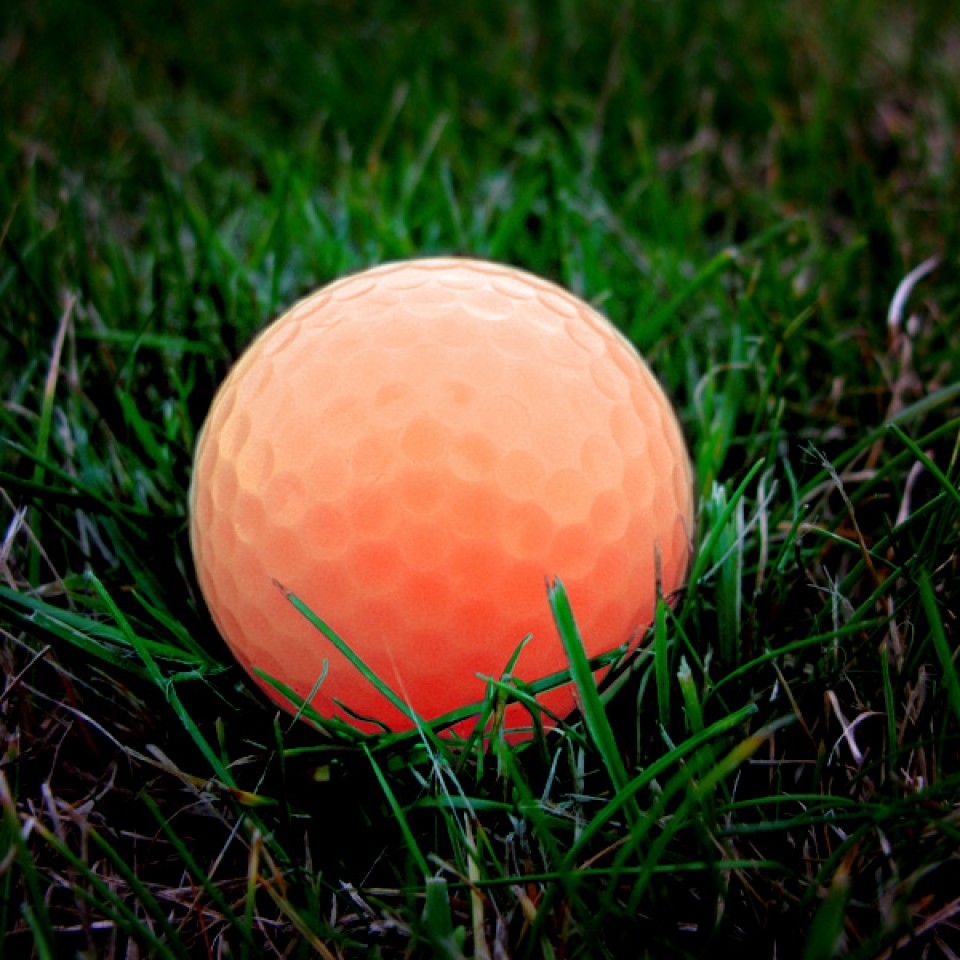The Impact of Weight Shift in your Golf Swing
How to stop hitting behind the golf ball? When you play golf, your body’s weight shift plays a huge role. A proper shift can result in powerful, well-struck shots. But if you get it wrong, it often leads to hitting the ground before the ball or ‘fat shots’. This is when you hit the soil, taking a divot, before making contact with the ball, causing a loss of distance and accuracy.

Understanding Weight Distribution and Swing Dynamics
It all starts with how you distribute your weight when setting up. Keep a little more weight on your lead foot. Think 60% on the front, 40% on the back foot. During the backswing, shift your weight to the trail foot. Coming down, shift it all back to the lead foot for a solid strike. Remember, keeping weight on your trail foot as you swing down will cause those frustrating fat shots. To avoid this, try the weight shift drill.
Weight Shift Drill:
- Start with your normal stance.
- Move your lead foot back, next to your trail foot.
- As you swing down, step the lead foot forward again.
- Practice this movement to get used to the forward weight shift.
By doing this drill, you train your body to move the weight naturally. This way, your low point moves with you and arrives just in front of the ball, leading to clean contact and eliminating fat shots. The key is to shift your weight dynamically with your swing, which will also help your swing speed and power.
The Role of the Swing Direction in Consistent Ball Contact
When you swing your golf club, the direction is crucial for hitting the ball consistently well. An incorrect swing path can lead to skewed shots or the dreaded fat shots, where the club hits the ground before the ball. Adjusting your swing direction can have a big impact on your contact with the ball and ultimately on your overall game.
The Vertical Line Swing Technique
The Vertical Line Swing is a technique that promotes a straight up-and-down arm movement during the backswing. This method helps avoid the common error of swinging too flat or inside. Here’s how you can start practicing this technique:
- Stand straight and ensure you’re holding the club with a relaxed grip.
- During the backswing, lift your lead arm straight upwards rather than around your body.
- Focus on a controlled upward movement that doesn’t strain your back or shoulders.
- At the peak of the backswing, your lead arm should point up while remaining aligned with your shoulder line.
- Swing down smoothly ensuring your hands lead the way to the ball and don’t cast outwards.
Practicing the Vertical Line Swing could make a significant difference in preventing shots where you hit behind the ball. By aligning your lead arm vertically, you encourage a more consistent swing path that helps with both ball striking and distance. Remember to repeat the movements until they become a natural part of your swing routine.
Ball Positioning: The Forgotten Element of a Successful Shot
Ball positioning is often overlooked but it’s crucial for great golf shots. Incorrect ball placement leads to hitting behind the golf ball, causing fat shots and poor performance. To improve, focus on where the ball lies in relation to your stance.
Mastering Ball Position for Irons
For irons, position the ball slightly forward of center in your stance. This ensures you strike the ball at the perfect point in your swing. Your aim is to hit the ball with a descending blow, not too early or late. Use these simple steps to achieve proper positioning:
- Start with feet together, ball in the center.
- Step your lead foot towards the target about 5-6 inches.
- Step your trail foot back a little more, creating a small stance width.
With the ball forward of center, you’ll strike it as your club descends, promoting solid contact and preventing fat shots. This ball position adjustment is simple but can profoundly improve your iron shots. Practice it regularly and watch your strike quality transform.

Addressing Swing Path Issues and Their Effects on Contact
Having the correct swing path is critical for making solid contact with the golf ball. A mistake in the swing path can lead to inconsistent shots, including hitting behind the ball, also known as ‘fat shots.’ It’s essential to inspect and correct your swing path to improve your game drastically.
The Danger of Inside-Out Swing Paths
An inside-out swing path often results in fat shots. This error occurs when the clubhead moves too far inside on the takeaway and comes back to the ball from inside the target line. Here’s how to correct it:
- Ensure your takeaway is straight back along the target line rather than too far inside.
- Check that your body isn’t swaying away from the target during the backswing as this promotes an inside-out path.
- Practice drills that focus on keeping the clubhead outside your hands during the takeaway.
- Monitor the position of the club at the top of your backswing; it should not drop too far inside.
By addressing these issues, you can correct your swing path, reduce the instances of hitting behind the golf ball, and consequently improve your shot quality. Remember, a consistent and correct swing path is a cornerstone of excellent ball-striking.
The Importance of Leading with Your Hands for Pure Strikes
A key to nailing those perfect strikes in golf is leading with your hands. This means your hands and the club’s handle should reach the ball before the clubhead does. Getting this right helps avoid hitting behind the golf ball, also known as ‘fat shots’, and contributes to crisper, more reliable contacts.
Imagine swinging a hammer: to drive a nail effectively, the bottom of the hammer must lead; the same principle applies to a golf swing. By ensuring your hands lead, you create a descending blow on the ball, which is particularly crucial for iron shots. This descending action promotes better compression and, in turn, greater control and distance.
Leading with your hands doesn’t necessarily mean that you need to stiffen your wrists or forearms. Instead, it’s about the timing of the release, mastering when and how your hands move through the ball. If you release too early, the so-called ‘flip’, you’ll struggle with both contact and power because your club is slowing down at the moment of impact. So, engaging your hands at the right time is vital for clean, powerful shots.
Drills for Achieving Proper Hand Position at Impact
To improve hand-leading impact, try these simple drills:
- Half-Swing Drill:
- Take a short backswing, stopping when your club is parallel to the ground.
- As you swing forward, focus on leading with the handle.
- Strike the ball, ensuring your hands are ahead at impact.
- Punch Shot Drill:
- Use a shorter club, like a 9 iron.
- Play the ball back in your stance.
- Make a shortened, controlled swing, forcing your hands to lead.
- Feel the impact and see how the ball’s flight is lower and more penetrating.
- Alignment Stick Drill:
- Place an alignment stick in the ground on your target line, at an angle.
- Practice your swings, trying not to hit the stick.
- This encourages a hands-leading path that avoids hitting behind the ball.
Consistently practicing these drills can teach your body the correct movement patterns to ensure your hands are leading the way at impact. With time, this method can become second nature, allowing you to strike the ball cleanly and effectively, time after time, and say goodbye to those frustrating fat shots.
Overcoming the Tendency to Over Rotate During the Backswing
Over rotation in your backswing can hurt your golf game. It often leads to fat shots. This means you’ve swung the club too flat and too much inside. The result? You hit the ground before the ball. To avoid this, focus on controlling your backswing. Good control helps maintain a consistent swing path. With less rotation, you improve contact with the golf ball. Let’s explore exercises to help with your takeaway.

Exercises for a Controlled and Effective Takeaway
To improve your backswing, try these exercises:
- One-Piece Takeaway Drill:
- Hold your club’s grip against your thighs.
- Keep your arms and club as one unit as you start the backswing.
- This promotes a straighter takeaway, reducing over rotation.
- Hip Rotation Check:
- Practice backswings in front of a mirror.
- Watch your hips to ensure they don’t turn too much.
- Aim for a slight hip rotation while keeping your front hip close to its original position.
- Hands in Front of Chest Drill:
- During your takeaway, keep your hands in front of your chest longer.
- This prevents the club from going too far inside.
- A straighter path for the hands means less chance of hitting behind the ball.
By doing these exercises, you can control the backswing. A better takeaway means more consistent shots. And that means fewer fat shots and better scores on the course. Remember, practice makes perfect. So keep at it, and you’ll see the improvements.
